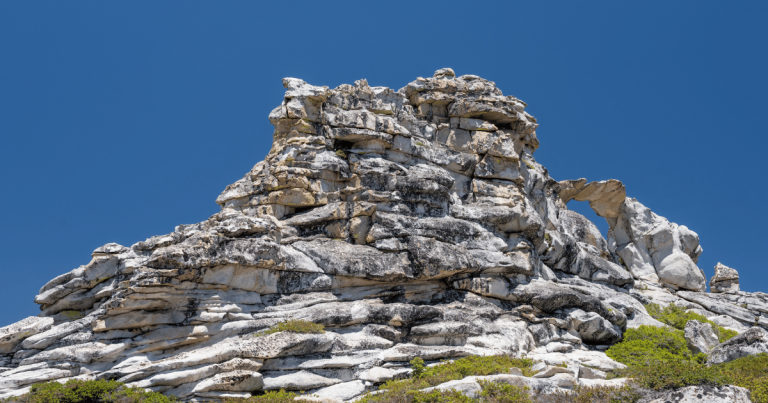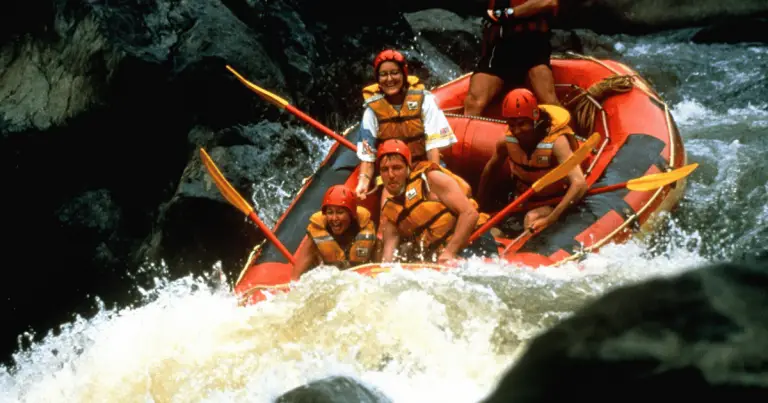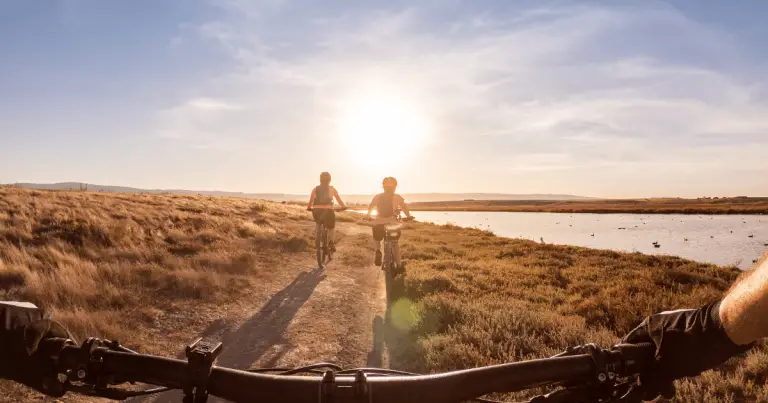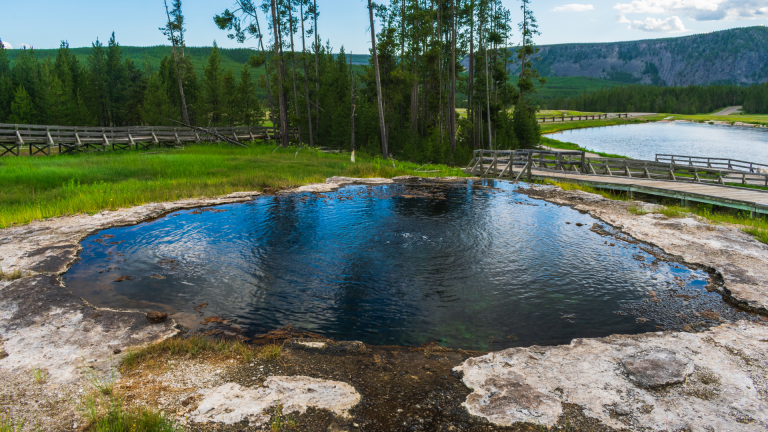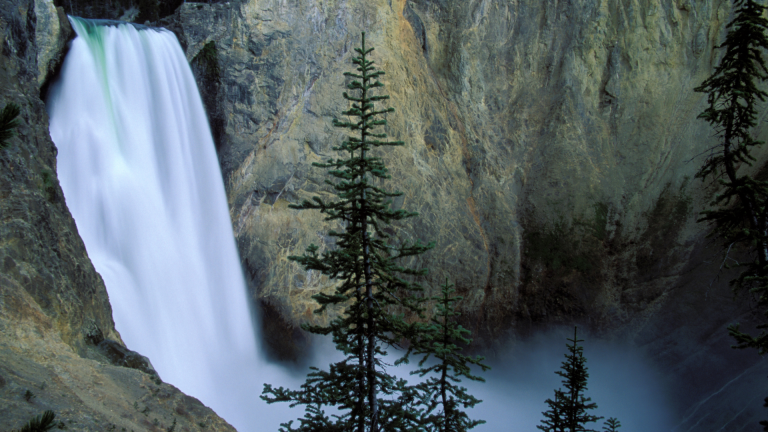Dewey Point Yosemite: A Scenic Overlook of Grandeur
Dewey Point Yosemite, located in California’s Sierra Nevada mountains, offers an unparalleled panoramic view of Yosemite National Park. Positioned at an elevation of 7,385 feet, visitors can take in the park’s stunning natural beauty and unique geology, including sweeping vistas of El Capitan and Yosemite Valley.
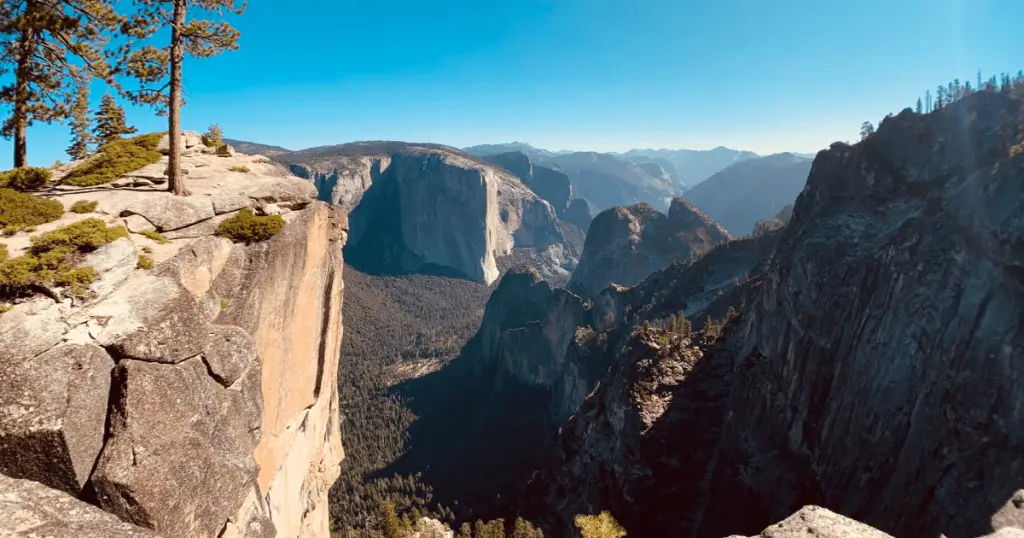
The Majesty of Dewey Point Yosemite
The majesty of Dewey Point in Yosemite lies in its unobstructed, awe-inspiring views of Yosemite Valley. Perched on the edge of a dramatic precipice, this vista offers a unique vantage point over some of the park’s most famous landmarks.
To the west, the monumental El Capitan rises from the valley floor, its granite face changing hues with the shifting sunlight. Meanwhile, to the east, the ethereal cascade of Yosemite Falls plunges in a mesmerizing dance of water and light.
On a clear day, its thunderous roar can even reach the ears of those standing at Dewey Point. This panoramic spectacle makes Dewey Point a photographer’s paradise, where every snapshot captures a slice of Yosemite’s innate grandeur.
Access and Hiking to Dewey Point Yosemite
Accessing Dewey Point can be done via several trailheads, each providing a unique journey through the park. The two most popular routes are the McGurk Meadow and Glacier Point trailhead.
The McGurk Meadow Trailhead
The McGurk Meadow trailhead is a roughly 8-mile round trip that snakes through gorgeous meadows, dense forests and offers stunning views of the surrounding mountains. The trail gradually ascends to Dewey Point, making this an ideal route for those seeking a moderately challenging hike.
The Glacier Point trailhead
The Glacier Point trailhead, on the other hand, is a more demanding but equally rewarding 14-mile round trip. This route is recommended for experienced hikers seeking to immerse themselves in Yosemite’s diverse landscapes, including panoramic views of the High Sierra and Half Dome.
The Dewey Point Trail
One of the most popular hikes is the Dewey Point Trail. This 7-mile round trip journey begins at the Badger Pass Ski Area and takes hikers through picturesque forest trails, culminating in the breathtaking vista that is Dewey Point.
Regardless of the trail, always remember to check the weather conditions and prepare accordingly. Hiking in the early morning or late afternoon provides the best light for photography and avoids midday heat.
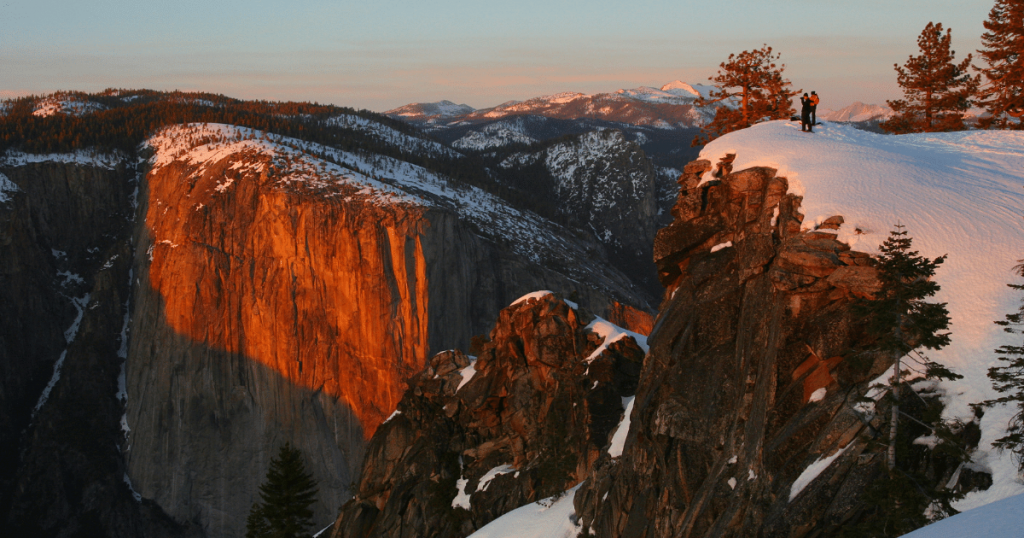
The Four-Mile Trail Exploration
Another primary route to reach Dewey Point is the Four-Mile Trail. Known for its challenging yet rewarding path, the Four-Mile Trail is a perfect blend of physical exertion and natural beauty. This trail spans approximately 4.8 miles one-way, making it a nearly 10-mile round trip.
The trail begins near the base of Sentinel Rock and winds its way to the top of Glacier Point. The path is so named for its original length of 4 miles before it was extended.
The trail offers a steady climb of about 3,200 feet in elevation, which takes hikers from the valley floor up to the awe-inspiring Glacier Point.
The terrain of the Four-Mile Trail varies from well-maintained sandy paths to rocky outcrops and steep inclines. Despite the challenges, the trail offers breathtaking views of Yosemite Falls, El Capitan, and Half Dome, providing ample reward for the intense climb.
It’s worth the effort as you’re treated to the grandeur of Yosemite’s iconic landmarks at every turn. Planning for the Four-Mile Trail requires a fair bit of preparation.
The trail is strenuous and is not recommended for those who are wary of heights. Due to the significant elevation gain, being in good physical condition is essential. Start early in the day to avoid the afternoon sun and to ensure you have plenty of daylight for your hike.
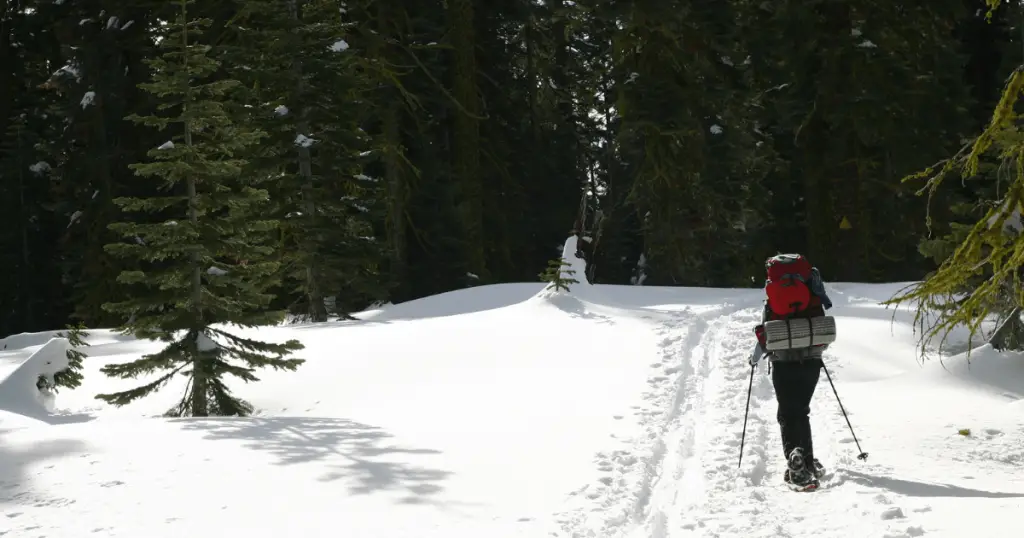
Scenic Beauty in All Seasons
Throughout the year, Dewey Point offers a captivating view of nature that changes with each season. The scenery is like a beautiful painting, with every season adding its unique touch.
Spring’s Bloom
Spring’s Bloom ushers in a season of renewal. As the snow melts, Yosemite Valley bursts into life, adorned with blooming wildflowers in riot colors.
The trails to Dewey Point are particularly picturesque during this time, with the thawing meadows offering a vibrant contrast to the granite cliffs. The weather is mild, making it an ideal time for hiking.
Summer’s Greenery
Summer’s Greenery transforms the park into a lush paradise. The trees and meadows are a vibrant green, and the weather is generally warm and sunny. This is a popular time for visitors, so consider starting your hike early in the day to beat the crowd.
Autumn’s Foliage
The arrival of Autumn’s Foliage paints the park in red, orange, and gold hues. Cooler temperatures make for comfortable hiking conditions and less crowded trails. The crisp air and autumn leaves create a stunning backdrop for photographs.
Winter’s Snow
With Winter’s Snow, Dewey Point becomes a winter wonderland. The snow-capped peaks and frosted trees add a magical touch to the scenery.
This season offers a unique hiking and photography experience, but the trails can be challenging due to the snow and cold temperatures.

Safety and Preparedness
Safety should be your top priority when planning a hike to Dewey Point. You’ll be journeying through diverse landscapes and potentially challenging terrains, so being prepared is crucial.
Weather Considerations
Weather in Yosemite can be unpredictable, and conditions can change rapidly. Before you depart, check the latest weather updates for accurate information. In the event of a storm or heavy snowfall, postpone your trip, as the trails can become dangerous.
Wildlife Safety
Yosemite is home to a variety of wildlife, including bears and mountain lions. Always maintain a safe distance from animals and never feed them. Store food and snacks in bear-proof containers and dispose of waste in designated areas.
Essential Gear and Clothing
Proper gear is vital for a safe hiking experience. Wear sturdy hiking shoes for traction and ankle support, especially on rocky trails. Layered clothing is advisable as it allows you to adjust to changing temperatures.
Stay Hydrated
Ensure you carry sufficient water for your hike. Dehydration could lead to fatigue, decreased coordination, and even heat stroke. If you’re hiking in the summer, you might need to drink more than usual due to the heat.
Tips for a Safe Visit
- Plan your route and stick to designated trails.
- Always let someone know your plans and estimated return time.
- Start early to maximize daylight and avoid crowds.
- Keep a comfortable pace and take regular breaks to rest and enjoy the views.
- Lastly, carry a first aid kit for emergencies.
Remember, your safety is paramount. Taking these precautions ensures your visit to Dewey Point will be enjoyable, safe, and unforgettable.
Conclusion: Dewey Point Yosemite
Embarking on a hike to Dewey Point via the Four-Mile Trail in Yosemite National Park is not just a journey but a transformative experience. Each season brings its unique beauty, painting the landscape with a palette of ever-changing colors and textures.
While the trail is demanding and requires preparation, the rewards are beyond measure – from the breathtaking views of Yosemite’s iconic landmarks to the intimate encounters with nature’s wonders. Safety and preparedness are paramount, but the journey is full of opportunities for discovery and awe.


